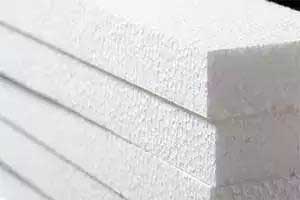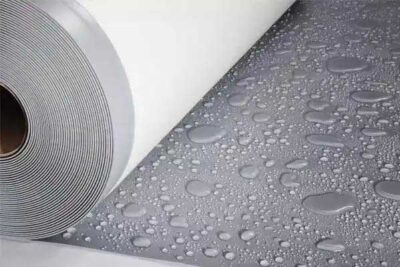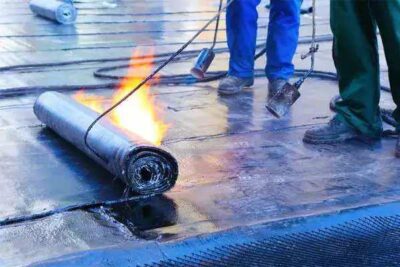
Contents
There are plenty of inexpensive and common thermal insulation materials on the market today. Each of these thermal insulation materials has its own ups and downs. As a result, when deciding which thermal insulation material you should use, you should make sure that you know which material will work best in your situation. We considered differences such as R-value, environmental impact, price, soundproofing, flammability and other factors below. Here are 5 commonly used thermal insulation materials:
Fiberglass
Fiberglass is the most common insulation preferred recently. Depending on how it’s made, fiberglass can minimize heat transfer by braiding thin strands of glass into an insulating material. The main disadvantage of fiberglass is the danger of use. Because fiberglass is produced from finely woven silicon, tiny glass fragments and glass dust are formed. These can cause damage to the eyes, lungs and even skin if proper safety equipment is not used. In addition, when appropriate safety equipment is used, fiberglass installation can be done without incident and without any problems.
Fiberglass is an excellent non-flammable insulation material with values ranging from R-2.9 to R-3.8. Do not forget to use mask, gloves, eye protection while applying this product.
Mineral Wool

Mineral wool essentially refers to several different types of insulation. Firstly, it refers to glass wool, which is fiberglass made from recycled glass. Later, it may mean rock wool, which is a type of insulation produced from basalt. And, it may refer to slag wool produced from slag, which comes from steel mills. Much of the mineral wool in America is actually slag wool.
Mineral wool can be purchased in layers or as a loose product. Most mineral wools do not have additives to make them fire resistant, making them weak for use in high temperature conditions. However, it is not flammable. When used with other forms of fire resistant insulation, mineral wool is definitely an effective solution for insulating large areas. Mineral wool has an R-value that differs from R-2.8 to R-3.5.
Cellulose

Cellulose insulation is probably one of the most environmentally friendly insulation systems. It is made from cellulose, recycled paper, cardboard, and other similar products and comes in loose form. Cellulose has an R-value of R-3.1 to R-3.7. A number of recent studies on cellulose have proven that it can be an excellent material for use in minimizing fire damage. Due to the compactness of the material, it is present in the cellulose next to oxygen. Without the oxygen in the material, it helps to minimize the amount of damage that a fire can cause.
Indirectly, cellulose is not only perhaps one of the most environmentally friendly forms of insulation, but also one of the most fire-resistant forms of insulation. However, this material also has disadvantages, such as allergies that some individuals may experience to newspaper dust. Also, it is relatively difficult to find people skilled in using this type of insulation compared to, for example, fiberglass. Still, cellulose is an effective and inexpensive means of insulation.
Polyurethane foam

Polyurethane foams are an excellent form of insulation. Polyurethane foams use non-chlorofluorocarbon (CFC) gas as a blowing agent. This helps reduce the rate of damage to the ozone layer. It is relatively light, weighing in at around two kilograms (2 lb/ft^3) per cubic foot. They have an R value of approximately R-6.3 per inch of thickness. Low density foams are also available to be sprayed into areas where insulation is not available. This type of polyurethane insulation has a rating of approximately R-3.6 per thickness. Another advantage of this type of insulation is that it is fire resistant.
Polystyrene

Polystyrene is a waterproof thermoplastic foam that is an excellent heat and sound insulation material. It is available in two types, expanded (EPS) and extruded (XPS), also known as Styrofoam. These two types differ in performance values and cost. The more expensive XPS has an R value of R-5.5, while EPS is R-4. Polystyrene insulation has a uniquely smooth surface that no other insulation has.
It is formed or cut into blocks suitable for foam wall insulation. Foam is flammable and needs to be coated in a non-combustible chemical called Hexabromocyclododecane (HBCD). HBCD has come under fire recently because of the health and environmental risks associated with its use.
Other Common Thermal Insulation Materials
Although the elements listed above are the most commonly used thermal insulation materials, they are not the only ones used. In modern times, materials such as airgel (used by NASA to make heat-resistant tiles that can withstand heat transfer up to about 2000 degrees Celsius or with no heat transfer) have become ideal and usable. One of them is Pyrogel XT. Pyrogel is one of the most efficient industrial insulations on earth. Required thicknesses are 50% – 80% less compared to other insulation materials.
Another insulation material not mentioned is natural fibers such as hemp, cotton, sheep’s wool and straw. Similar to polyurethane, polyisocyanurate is a closed-cell thermoset plastic with a high R-value that also makes it a popular choice as an insulator. Vermiculite, perlite and urea-formaldehyde are some health-hazardous products that were used as insulation in the past and are now illegal, unusable or rarely used. These products have the reputation of containing formaldehyde or asbestos, which has actually been removed from the list of commonly used insulation materials.
There are many forms of insulation, each with its own characteristics. But by researching each type thoroughly, you can discover which would be the right type for your specific needs:
- Airgel costs more than others, but is definitely the best type of insulation.
- Glass fiber is economical, but requires meticulous handling.
- Mineral wool is effective but not fire resistant.
- Cellulose is fire resistant, environmentally friendly and effective, but difficult to craft.
- Polyurethane is an all-around good insulation product, even if it is not particularly environmentally friendly.
- Polystyrene is a kind of thermal insulation material, but its safety is discussed.








